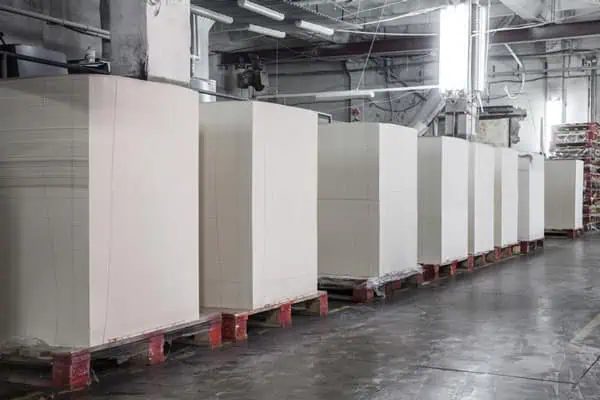What is Printing Bleed in Commercial Printing and How to Use It.
Commercial printing often requires the use of a bleed, which is an important concept to understand when creating artwork for printed products. A bleed is extra image, design element, or background color that extends 0.125" or 1/8" beyond the final cut edge of the printed page. This prevents any white edges from appearing on the finished product after cutting. In this article, we’ll explain what exactly printer bleed is and why it's essential for commercial printing. We’ll also provide some tips and tricks to help you get started with designing artwork with bleeds.
What is a Bleed in Commercial Printing?
A bleed is an essential concept in commercial printing. It is extra image, background color, or design elements that extend beyond the trim edge of the printed page, ensuring no white edges appear on the final product. This technique guarantees that all parts of the design remain visible, even on the edges.
To achieve this, you need to create artwork with bleeds. This means your artwork should have extra elements extending beyond the page edges so it can be trimmed down and still look perfect. Usually, a standard bleed for commercial printing is 0.125 inches (1/8th inch) on each side. This ensures no white edges on the finished product after trimming and accommodates any small misalignment during cutting or trimming.
Designing with bleeds also involves ensuring all important text or images are kept at least 0.125 inches inside from all four cut sides of the document’s boundaries as these will get cut off when trimmed. Therefore, all critical elements of your design should be securely inside these boundaries to avoid being lost during trimming or cutting.
Creating artwork with bleeds can be challenging, especially with complex designs or intricate details. Consulting professional help is advisable to ensure accuracy and precision when working with bleeds in commercial printing projects. This will help achieve high-quality results and prevent costly mistakes due to incorrect designs or calculations.
Why is Bleed Important?
Cutter Draw:
When cutting large stacks of paper, slight movements, known as cutter draw, can occur. This can cause slight misalignments, resulting in unwanted white edges on the final printed product. Bleed ensures that even with these slight shifts, the design still extends to the edge without any white showing.
Humidity:
Paper can expand and contract with changes in humidity. This slight change can affect the alignment of the paper during printing and cutting. By including a bleed, you can accommodate these variations and ensure that the design remains consistent to the edge of the paper.
Trimming Precision:
Even with modern cutting technology, there can be slight deviations during the trimming process. Bleed acts as a safety net to account for these deviations, ensuring that the design still covers the entire printed area without any gaps or white lines.
Professional Appearance:
Bleed contributes to a polished, professional appearance by eliminating the risk of white borders. This is crucial for maintaining the integrity and visual impact of marketing materials, business cards, brochures, and other printed products.
Consistency:
Using bleed helps to ensure that the colors and design elements match perfectly from edge to edge, providing a seamless look across different prints. This consistency is essential for maintaining brand identity and professional standards.
Conclusion:
Including bleed in your designs not only improves the visual quality of your printed materials but also helps to avoid costly reprints and ensures that the final product meets professional standards. By extending your design elements beyond the final trim size, you can guarantee that the entire design is visible and intact, even with slight shifts during the cutting process .
Understand More

Paper Types Explained
Discover the differences between coated, uncoated, matte, and gloss paper stocks. Learn how paper weight and finish affect the look, feel, and durability of your printed piece so you can choose the right option for brochures, books, or marketing materials.

Binding Types
From saddle stitch to perfect bound and Wire-O, each binding style creates a different look and level of durability. Explore which binding method best suits your booklet, catalog, or publication so your project is both functional and professional.

Folding Calculator
Folding layouts can be tricky — our calculator makes it easy. Quickly figure out panel sizes and fold styles like tri-fold, Z-fold, or gatefold so your design lines up correctly and prints without surprises.
How to Add Printer Bleed in InDesign
Adding printer bleed to your documents in InDesign is straightforward. Follow these steps to ensure your documents look professional and are printed correctly:
- Open the document in InDesign.
- Select the ‘File’ menu, and then select ‘Document Setup’.
- In the ‘Bleed and Slug’ section, enter a value of 0.125 inches or higher for all four options (Top, Bottom, Left, Right). This defines how far elements should extend beyond the page edges before being cut.
- Click ‘OK’ to set up your bleed values.
- Create or move elements so they are at least 0.125 inches away from all four edges of the artboard/page size (excluding objects bleeding outside). If space constraints prevent this, consider shrinking the element or substituting a different one.
- When satisfied with your design, export it as a PDF/X-1a file to ensure your bleeds are recognized in the print-ready PDF.
New Indesign Document with Bleed
Export Indesign Document with Bleed
Understand More

Paper Types Explained
Discover the differences between coated, uncoated, matte, and gloss paper stocks. Learn how paper weight and finish affect the look, feel, and durability of your printed piece so you can choose the right option for brochures, books, or marketing materials.

Binding Types
From saddle stitch to perfect bound and Wire-O, each binding style creates a different look and level of durability. Explore which binding method best suits your booklet, catalog, or publication so your project is both functional and professional.

Folding Calculator
Folding layouts can be tricky — our calculator makes it easy. Quickly figure out panel sizes and fold styles like tri-fold, Z-fold, or gatefold so your design lines up correctly and prints without surprises.